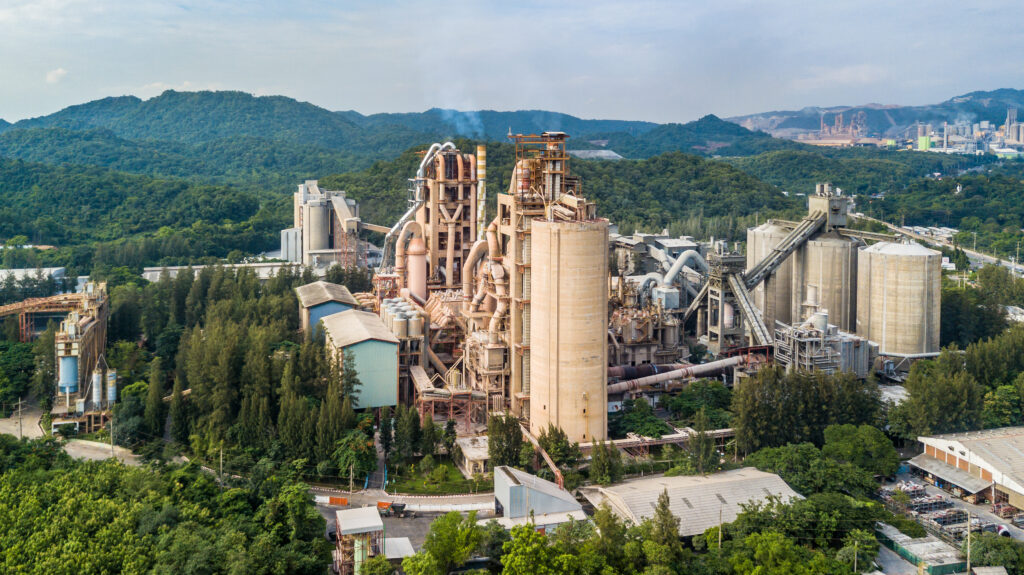Cement Industry Sustainability Regulations and Beyond: A Guide to Compliance and Best Practices
The cement sector stands at a pivotal crossroads as it faces a surge in scrutiny and cement industry regulations aimed at decarbonising the industry. Keeping on top of the rules and guidance is a big task. So we thought we’d round up some of the key changes in this handy article. But before we get into the nitty gritty, a quick word on the complexities of the UK-EU legal relationship.
UK and EU legislation
Since leaving the EU in 2016, the UK has a more complicated relationship with EU law than expected. While one of the main goals of Brexit was to give the UK more control over legislation, in reality, many EU laws remain in place. And, with the worldwide problem of climate change driving global, EU and UK solutions to decarbonise the cement industry, businesses will need to keep an eye on cement industry regulations and legislation, best practice and guidance.
Fit for 55
In April 2023, the EU introduced new, more stretching carbon-cutting goals in its Fit for 55 package. This means European countries will be targeting CO2 emission reductions of -62% from 2024 and beyond, which will impact two key pieces of cement industry legislation.
1 – emissions trading system allocations
In 2013, the EU gave the manufacturing sector – including cement producers – 80% of its carbon allowances for free, reducing to 30% by 2020. To help the EU hit its increasingly ambitious CO2 reduction goals, this emissions trading system (ETS) free allocation is being phased out over a nine-year period from 2026 to 2034.
The phase-out will start slowly before accelerating towards the end of the period. And it will correspond directly to the carbon border adjustment mechanism (CBAM) phase-in. During this transition period, CBAM will only apply to the emissions not included in the free allocation under the ETS.
EU and UK targets to reduce cement emissions will have a significant impact on the industry over the next 10 years and beyond. There will always be a lag between more and less regulated countries in reducing CO2 emissions. However, the CBAM regulations will reduce the likelihood of cheaper imports being brought into the EU and eventually the UK.

2 – carbon border adjustments mechanism (CBAM) reporting
The Carbon Border Adjustment Mechanism (CBAM) aims to level the playing field for cement producers in Europe by imposing a carbon price on imports from non-EU countries. The plan is to ensure the sustainability of cement by making certain imported cement meets similar sustainability standards to those set by European countries.
The legislation relies on accurate reporting with the reporting rules implemented in multiple phases. However, there are some changes coming into force from 2024 to 2026 you need to be aware of:
- Until the end of 2024 – companies must collect fourth quarter data as of 1st October 2023 with the first report submitted by the end of January 2024. Companies can report in one of three ways:
- Full reporting in line with the new EU method
- Reporting based on an equivalent method
- Reporting based on default reference values – until July 2024 only
- 1st January 2025 – only the EU method can be used. Estimated and default values can only be used for complex goods if the estimates are less than 20% of the total embedded emissions.
- 1st January 2026 onwards – the permanent system comes into effect. Importers will need to declare the quantity of goods imported into the EU in the previous year and the greenhouse gas (GHG) emissions embedded in them. The company will then provide the appropriate number of CBAM certificates.
In an update to the original European Commission plans, indirect GHG emissions from electricity and heat will now be covered for cement.
Dedicated IT tools have been developed to help importers with these calculations and there’s also in-depth guidance and training to support businesses with these changes.

The UK
As in the EU, the UK has also reviewed its emissions trading and CBAM schemes.
1 – Emissions Trading Scheme
The UK government has also reviewed its carbon emissions trading plans and is reducing the total number of carbon allowances available for auction in 2024 to 69 million – a drop of 12.4% compared to 2023.
Each year, from 2024, the number of carbon allowances will continue to reduce, resulting in a 45% decrease by 2027. Then decreasing further to a total of around 24 million by 2030. With fewer available allowances to buy, the cement sector will need to take further steps to cut its emissions.
As with the EU’s legislation, certain sectors with high carbon leakage risk will be given allowances, however these are under review for the lime industry. So watch this space or find out more here.
2 – UK CBAM
The UK is set to implement a new import carbon pricing mechanism by 2027 to support the decarbonisation drive. Cement imports into the UK from overseas will face a comparable carbon price to goods produced in the UK by 2027. This will help avoid carbon leakage, ensuring overseas products have a comparable carbon price to those produced in the UK.
The charge applied will depend on the amount of carbon emitted during the production of the imported good. This scheme is a follow-on to the EU CBAM scheme and will significantly increase charges for the import of high-carbon producing industries like cement. Making it increasingly important to understand the end-to-end emissions for every cement product.
UK Concrete and Cement Industry – Roadmap to Beyond Net Zero
This roadmap from the UK Concrete trade association sets out a pathway to take the UK concrete and cement industry to beyond net zero by 2050. Hopefully helping to keep the sector on the front foot and ahead of government legislation.
The roadmap builds on and replaces the UK Cement Industry 2050 Greenhouse Gas Strategy published in 2013. It focuses on the application of five decarbonisation technologies associated with cement production and calculates the carbon-saving potential of each of these categories:
- Indirect emissions from decarbonised electricity
- Decarbonised transport networks
- Low-carbon concretes
- Fuel switching
- Carbon capture, usage and storage (CCUS)
This kind of best practice guidance is already setting the scene for companies around the sustainability of cement. So it’s a useful document that could help your business’ operations to become more environmentally friendly.
Cement industry regulations to watch
BSI recommends changes to the UK’s cement recipe
Although this isn’t a piece of legislation, new concrete manufacturing guidance from the British Standards Industry (BSI) could save one million tonnes of CO2 each year if adopted across all UK construction sites.
The proposed recipe blends finely ground limestone from UK quarries with other materials to reduce the amount of traditional cement used, creating a lower carbon concentrate. According to the BSI, for every 5% of limestone powder added, every tonne of concrete can achieve 5% lower CO2 emissions.
Ongoing research into low-carbon binders is continuing to gather pace globally, so keep one eye on this developing field.

The European Union’s Green Deal Industrial Plan
Published in February 2023, the EU’s Green Deal Industrial Plan aims to simplify, speed up and align incentives to maintain the EU as a competitive place for net zero investment. While it does not include specific measures for the cement manufacturing industry yet, it’s likely these will be developed to include some in future. So watch this space for more news on the journey to eco-friendly concrete.
Greenhouse gas protocol
Since 2013, all UK quoted companies have had to report their greenhouse gas emissions as part of their annual Directors’ Report. Non-listed companies and limited liability partnerships do not have to do this legally. However, as the sustainability of cement becomes a more pressing issue – and with the likelihood of more stringent reporting requirements in future – more cement firms are seeking to better understand their GHG emissions. Including scope one, two and three emissions which cover:
- Direct emissions from company-owned machinery, facilities and vehicles.
- Indirect emissions sources associated with the generation of electricity, heat, steam and/or cooling.
- Indirect emissions resulting from all other activities and sources not covered above including business travel, supply chain, waste and deliveries.
With the sustainability of cement and cement containing products set to become an even bigger focus for the government and public, cement industry leaders need to think green. If you’re looking for support with reducing the carbon footprint of your cement containing products, contact Cemkem’s technical team.


















